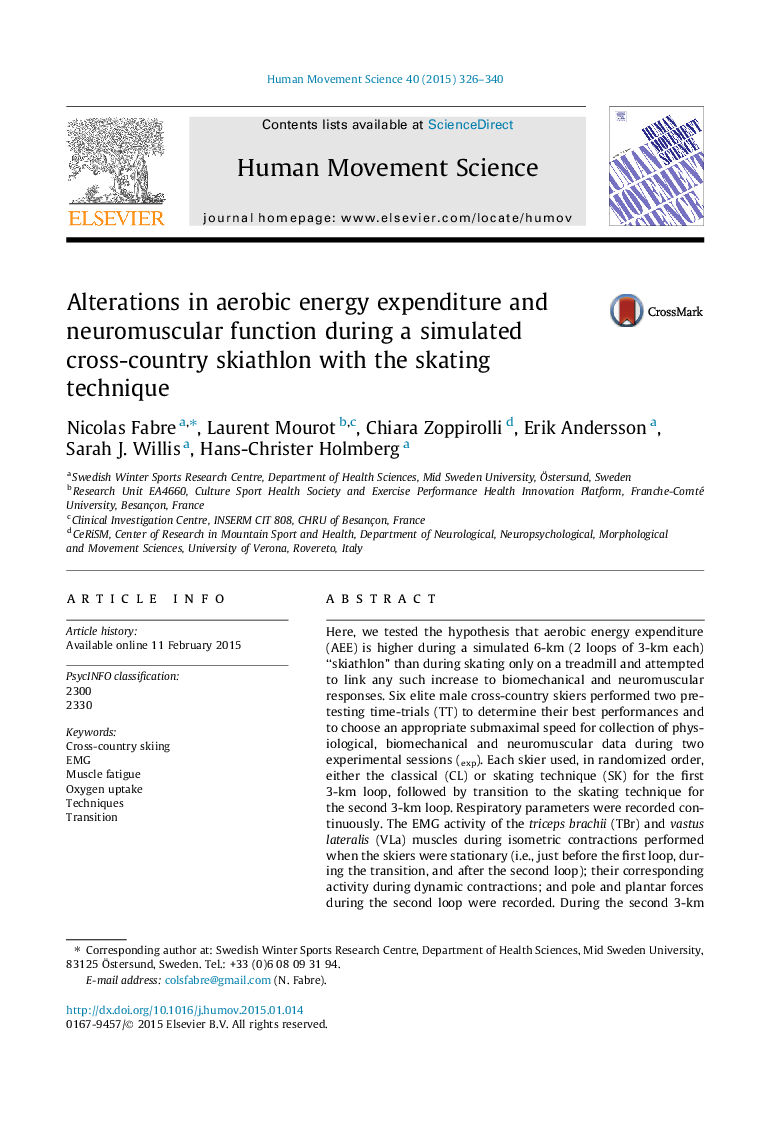| Article ID | Journal | Published Year | Pages | File Type |
|---|---|---|---|---|
| 7292138 | Human Movement Science | 2015 | 15 Pages |
Abstract
Here, we tested the hypothesis that aerobic energy expenditure (AEE) is higher during a simulated 6-km (2 loops of 3-km each) “skiathlon” than during skating only on a treadmill and attempted to link any such increase to biomechanical and neuromuscular responses. Six elite male cross-country skiers performed two pre-testing time-trials (TT) to determine their best performances and to choose an appropriate submaximal speed for collection of physiological, biomechanical and neuromuscular data during two experimental sessions (exp). Each skier used, in randomized order, either the classical (CL) or skating technique (SK) for the first 3-km loop, followed by transition to the skating technique for the second 3-km loop. Respiratory parameters were recorded continuously. The EMG activity of the triceps brachii (TBr) and vastus lateralis (VLa) muscles during isometric contractions performed when the skiers were stationary (i.e., just before the first loop, during the transition, and after the second loop); their corresponding activity during dynamic contractions; and pole and plantar forces during the second loop were recorded. During the second 3-km of the TT, skating speed was significantly higher for the SK-SK than CL-SK. During this second loop, AEE was also higher (+1.5%) for CL-SKexp than SK-SKexp, in association with higher VLa EMG activity during both isometric and dynamic contractions, despite no differences in plantar or pole forces, poling times or cycle rates. Although the underlying mechanism remains unclear, during a skiathlon, the transition between the sections of classical skiing and skating alters skating performance (i.e., skiing speed), AEE and neuromuscular function.
Related Topics
Life Sciences
Neuroscience
Cognitive Neuroscience
Authors
Nicolas Fabre, Laurent Mourot, Chiara Zoppirolli, Erik Andersson, Sarah J. Willis, Hans-Christer Holmberg,
